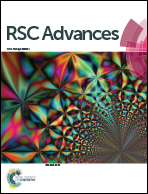A novel three-stage treatment train for the remediation of trichloroethylene-contaminated groundwater
Abstract
This study used a novel three-stage treatment train that was composed of chemical oxidation, anaerobic bioremediation and a passive reactive barrier (PRB) to remediate trichloroethylene (TCE)-contaminated groundwater. Batch oxidation and biodegradation experiments and a continuous column study were used to evaluate the compatibility of different technologies and the feasibility of the removal of TCE by the treatment train. The results of batch experiments show that high concentrations of TCE (50 mg L−1) were removed completely by the addition of 5000 to 50 000 mg L−1 persulfate during 24 to 96 h of reaction. Ferrous ion-activated persulfate may result in a residue of TCE due to the rapid consumption of persulfate by ferrous ions. Significant inhibition of soil bacteria was observed upon the addition of persulfate in concentrations greater than 20 000 mg L−1. Both low pH and the oxidative stress of persulfate were responsible for the adverse effect on indigenous microorganisms. The results of a microcosm study reveal that the presence of high concentrations of sulfate (up to 50 000 mg L−1) had no adverse effect on TCE removal. Sulfate significantly enhanced the dechlorination of vinyl chloride via sulfate reduction, which demonstrates that sulfate produced from persulfate oxidation could be utilized by indigenous bacteria to achieve the complete dechlorination of TCE. The addition of 5000 to 50 000 mg L−1 bioremediation reagent improved the degradation of TCE. Dechlorinating bacteria, Dehalococcoides, and the reductive dehalogenase, vcrA, of Dehalococcoides were detected during TCE biodegradation. The results of a column study show that the proposed treatment train removed TCE and its byproducts effectively and there was no problem with the connection of chemical oxidation and anaerobic bioremediation in the novel treatment train technology. The use of 10 000 mg L−1 of persulfate and the bioremediation reagent, and the PRB that can continuously release 6000 mg L−1 of persulfate are suggested to operate the treatment train. The proposed treatment scheme will provide a more effective alternative for the remediation of contaminated sites in the future.


 Please wait while we load your content...
Please wait while we load your content...